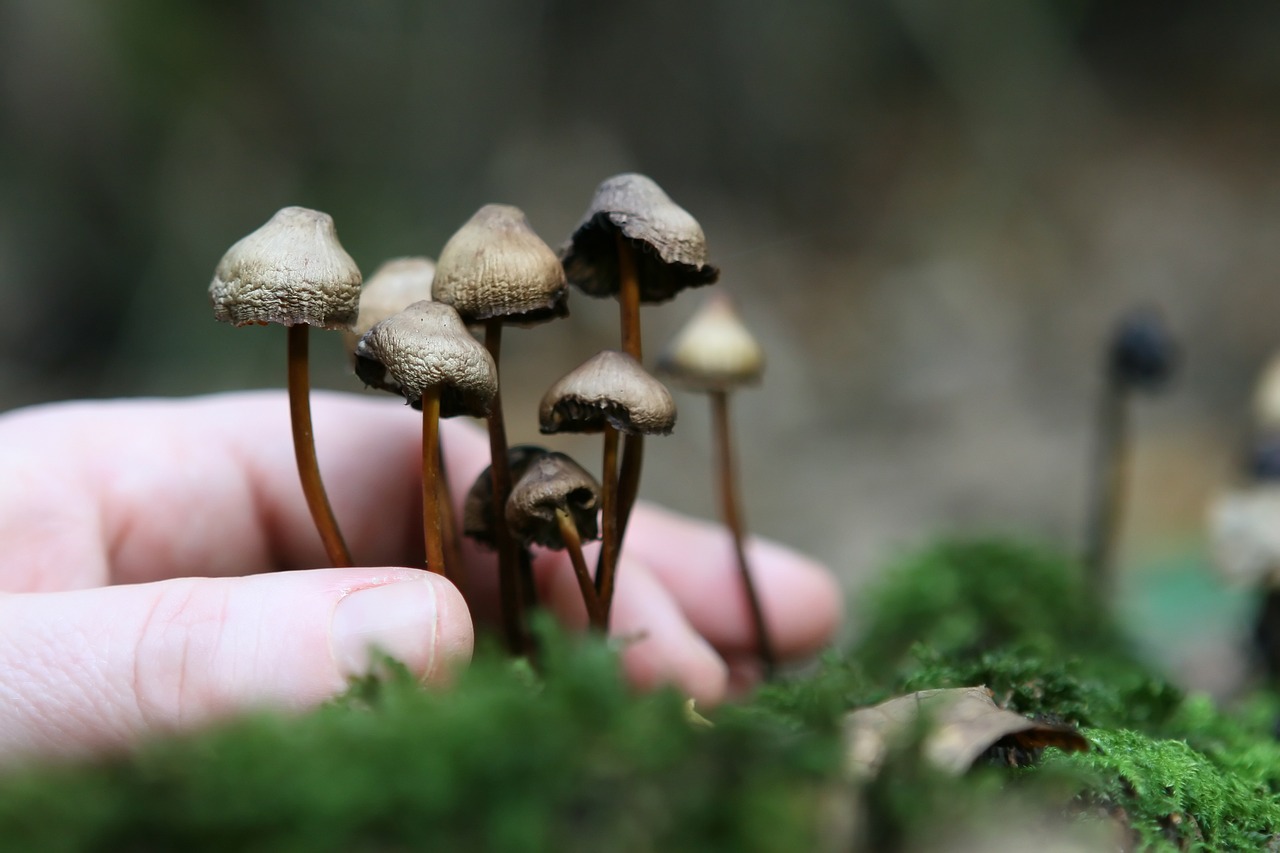Demystifying Mycelium
Mycelium, which forms the root structure of fungi, basically acts as the digestive system for mushrooms. It hunts for nutrients, converts them into a digestible form for the fungus and hence nourishes the fungus. This process leaves behind nutrient-rich byproducts that enhance the quality of the surrounding soil and create a nutrient-heavy biomass that is ideal for gardening.
Beyond their contribution to mushroom growth, mycelium networks are crucial for the well-being and development of many terrestrial plants, including trees. For example, the roots of trees form a mutually beneficial relationship with fungi. The tree provides sugars to the fungus as a carbon source, and in return, the fungus delivers essential minerals like nitrogen and phosphorus to the tree. You can learn more about this symbiosis here.
Fascinatingly, mycelium networks function as an underground communication system among plants, bearing similarity to the neural networks in our brains. Contemporary scientific studies indicate that plants and trees may have rudimentary nervous systems that fungi could potentially interact with, influencing aspects such as communication, memory, and learning. Moreover, mycelium promotes soil health by decomposing dying organic matter and neutralizing any pollutants present.
If you are keen on cultivating magic mushrooms, understanding how mycelium develops is crucial. The cultivation process can be intricate for novices, but acquiring knowledge about mycelium is a vital initial step. While you can always buy mushrooms from Magic Mushrooms Ottawa Canada online, learning about mycelium can enrich your cultivation journey.
Mycelium’s Growth Process
When fungal spores find a favorable environment for growth, they commence the formation of two types of mycelium. The first type, called primary or monokaryotic mycelium, is identified by the presence of a single nucleus in each cell and is typically not visible to the naked eye. The second type, referred to as secondary or dikaryotic mycelium, is observable and houses two nuclei in each cell.
When fungal spores germinate, they form what is known as the monokaryotic mycelium or primary mycelium. Upon encountering another compatible monokaryotic mycelium, these two can merge to create the dikaryotic mycelium or secondary mycelium. This secondary mycelium possesses the ability to produce mushrooms or sclerotia.
Different Types of Mycelia
Mycelia are classified into three distinct types, two of which signify successful cultivation.
- Rhizomorphic mycelia extend like strings and are identifiable due to their composition of units called hyphae. These grouped hyphae form a network known as rhizomorphs. Rhizomorphic mycelia initially spread out and then send chemical signals back to the colony, indicating that the area ahead is suitable for nutrient provision. The remaining mycelia then proceed to follow suit. The tip of the rhizomorphic mycelia releases a substance called peroxidase, which breaks down the material ahead of it for food. The hyphae then spread over the material, distributing the nutrients to the entire colony. This type of mycelia is preferred by many cultivators due to its potential for mushroom production from the substrate.
- Tomentose or “Fluffy” mycelia, exhibit numerous similarities to rhizomorphic mycelia, but the arrangement of their strands is unique. Although these strands may not be readily visible, they are indeed present. Their cotton-ball-like appearance indicates the strands are clustered together. Whether mycelia develop tomentose or rhizomorphic characteristics largely hinges on the growing environment. There’s ongoing debate among cultivators regarding the impact of mycelia type on growth rate and harvest yield.
- Aerial mycelia surface when the growth conditions are less than optimal. Under such circumstances, the mycelia tend to grow outward instead of spreading across the medium or forming a ball. Often misidentified as bacterial infection, this type of mycelia can obstruct your mushroom cultivation, resulting in smaller, weaker mushrooms. Lack of sufficient fresh air exchange and excessive humidity typically result in the occurrence of aerial mycelia.
Is it Mould or Mycelium?
It’s vital to distinguish between mould and mycelium. If your fruiting box exhibits green, blue, grey, or black patches, it’s likely contaminated. Discoloration is a key sign. However, blue spots might just be bruises and not necessarily a sign of contamination.
Cobweb moulds are usually quite conspicuous. Contrary to the bright The Mycelium is often characterized by a stringy, puffy texture and a greyish-white color. Although cobweb moulds and green moulds pose no direct harm to humans, they can negatively impact the health of your mushrooms.
Magic Mushrooms Ottawa Canada: Your Premier Destination for Mushroom Information
Whenever the topic of psychedelic mushrooms in Canada arises, remember Magic Mushrooms Ottawa Canada. Our continuous goal is to offer insightful information to ensure your mushroom experience is both safe and enjoyable.





